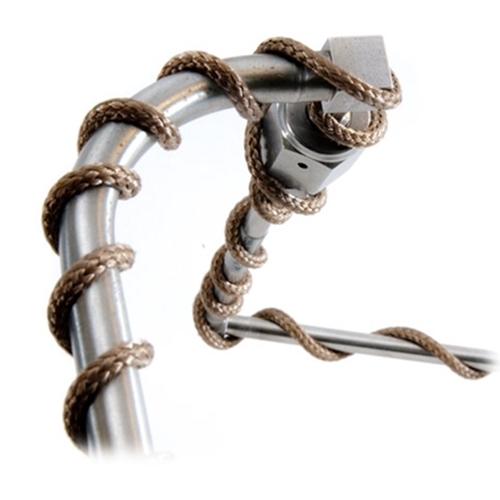Heater
Table of Contents
What is a Heater?
A heater is a device or system that provides heat to a room, building or other applications. These are typically powered electrically or by combustion. Common uses include: cooking, building heating, water heating, and other industrial processes. Different heaters are used in different applications based on their size, heating technique, and heat output. Some types of heaters that are used in industry are boilers, rope heaters, and large scale electric heaters.
Electric Heaters
An electric heater functions by passing a current through resistors which radiate heat. Because of this design, nearly 100% of the input electrical energy is converted to heat. There are numerous benefits to using electric heating such as: safety, reliability, they are relatively eco-friendly, and electric heating has become more affordable than oil and gas heating [4]. One drawback of electric heating is that it takes some time to start up due to the fact that the resistor must heat up first [5]. Some common applications and sectors that electric heaters are used in are: chemical processes, material processing, and renewable energy production.
Rope Heaters
Rope heaters are long circular electric heaters that can be used to wrap around a pipe or other round surfaces to bring up or maintain the temperature of the contents. These rope heaters are typically insulated with fiberglass, which also affords them a great deal of flexibility. Standard rope heaters can reach temperatures of up to nearly 500°C [1]. While rope heaters are most often used in piping applications, they are also used for heating laboratory glassware as well as in ceiling and wall panels. Rope heaters can be self-regulating and change their heat output depending on the surrounding temperature. They can also be constant-wattage which means their wattage is constant, regardless of the surrounding temperature. Both of these types of rope heaters require a temperature controller to regulate heat output [2].
Figure 1: Chart of number of watts per foot for a rope heater of differing fibreglass insulation to create a temperature rise for differing sizes of pipes [2] | Figure 2: A simple rope heater on a small piping system [3] |
|---|---|
Boilers
A boiler is a container of water that has been heated up by some other source. Then this hot water, or steam, is sent to radiators to distribute the heat to the locations it is needed. The fuel source is often gas and the heat produced in the combustion reaction is transferred to the water using a heat exchanger which is then sent through pipes to distribute the heat in the necessary locations [7]. A common application of boilers is in electricity production. The boiler is heated by the energy source and produces steam. This steam turns a turbine which produces the electricity. This is called a utility boiler. Some other common applications of boilers include hospitals, food processing plants, and automotive production [8].
| Figure 1: A large steam boiler [9] |
|---|
Natural Gas
Natural Gas heaters create heat through the combustion of gas. This can be used to produce warm air or to heat a boiler to produce steam. A forced air heater is a common use of natural gas and it operates by taking in cold air, moved into a heat exchanger where it is heated by a natural gas burner and the hot air is distributed where needed. Natural gas space heaters are also commonplace. They can be quite compact such as to not intrude on space in the room with a high level of efficiency. These space heaters can either work with a radiant panel to heat whatever is in its path, or using convective heating by warming the air and then redistributing it to the room with a fan or some other device [10].
Heating Transfer Methods
Conduction
Conduction is the heating of a material through contact of the heating element and the target material. One example of a heater type which uses conduction to heat is a stove burner. A pot or pan can be place on the very hot burner and the heat from the burner is directly transferred to the pot or pan contacting it [11]. Some other examples of heaters which use conduction to heat up the target are :
- A clothes iron uses conduction to heat clothes directly and make them more malleable
- A heating pad uses conduction to provide heat to a sore muscular area
- A soldering iron heats up and the tip makes contact with a metal to directly heat and melt it
Convection
Convection heating works by heating a liquid or gas and allowing it to move and heat the surrounding areas. This idea can be used in a number of ways when it comes to heaters. A heater can allow air to pass through, heat it up and then the warm air will evenly distribute in a room or container due to buoyancy [12]. Some other examples of convection heating are
- Heat exchangers use a heating element to heat a fluid which moves into another chamber and heats another fluid through a convection process
- Boilers produce steam which can be used to spread heat to other chambers or rooms
- Fan heaters heat up air and blows it back into the room
Contributors:
| User | Last Update |
|---|
Faculty Advisor: Sarah Meunier


